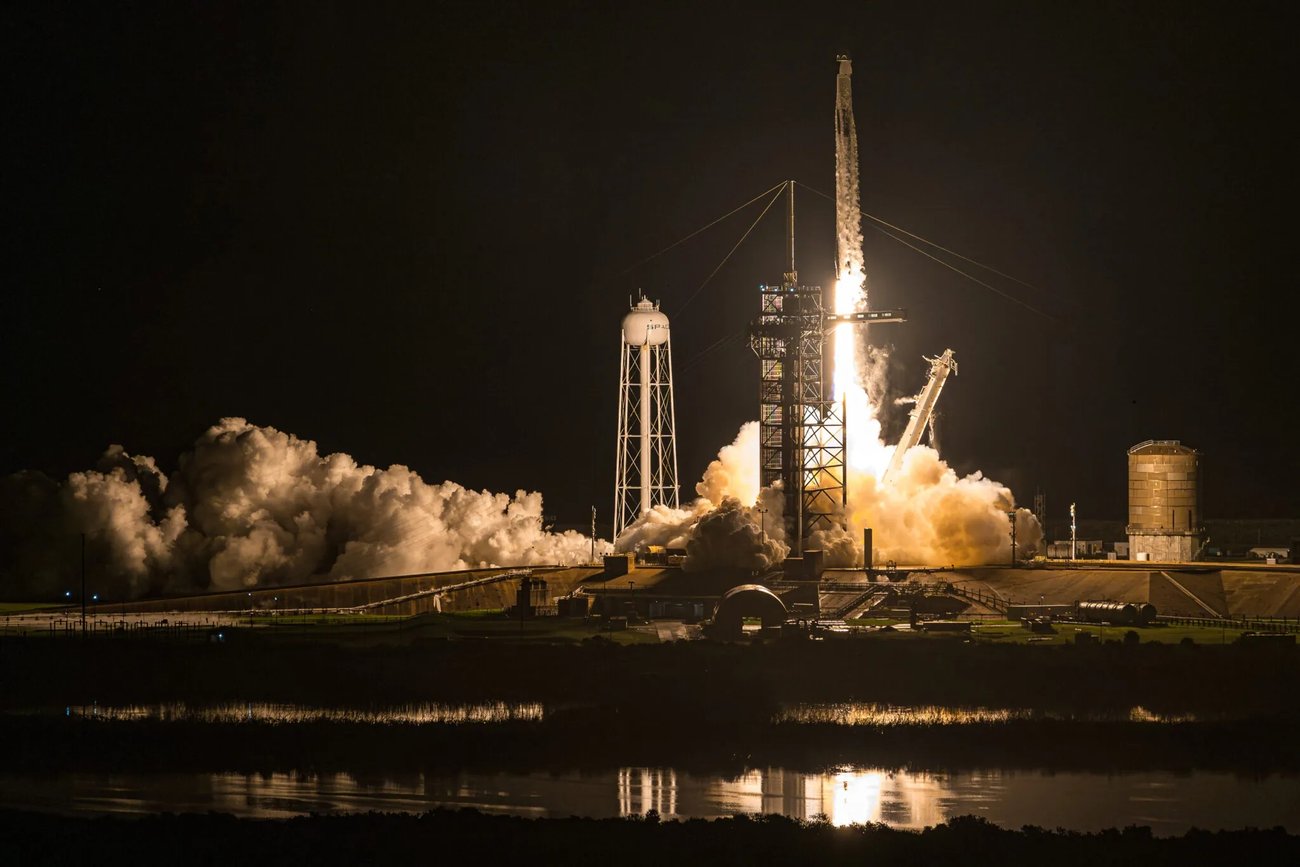Welcome to our weekly roundup of the top SpaceNews stories of the week, brought to you every Friday! This week, two members of the Polaris Dawn crew conducted the first spacewalks to be done by a commercial mission, NASA's infrastructure and FAA regulations both come under fire, and more. | | |
|
|
|
Polaris Dawn astronauts perform spacewalk |
|
|
|
By Jeff Foust, September 12, 2024 |
|
|
|
Astronauts on the Polaris Dawn mission conducted the first spacewalk on a non-governmental mission Sept. 12, briefly emerging from their Crew Dragon spacecraft.
Jared Isaacman, commander of the four-person crew, emerged from the hatch in the nose of the capsule at approximately 6:52 a.m. Eastern. Using a set of handholds and rails called a "skywalker" by SpaceX, he tested the mobility of the SpaceX-designed extravehicular activity (EVA) suit while standing in the hatch.
"Congrats to the huge team effort that it took to get us to this point. We know it's just the start," he said shortly before returning inside the spacecraft. Read More | | |
|
| | |
|
Ice-hunting Lunar Trailblazer and IM-2 nearly ready for January 2025 launch Two upcoming missions will begin their search for water ice on the moon during a shared Jan. 2025 launch. Combined, the missions will include an orbiter, lander and rover carrying various scientific instruments.
Astroscale and ClearSpace get funds to advance double satellite de-orbit mission The British subsidiaries of Japan-based Astroscale and Switzerland's ClearSpace announced about 2.35 million British pounds ($3 million) each in funding before tax Sept. 11 to continue de-risking their robotic arm capture system and debris de-tumbling capabilities.
Report highlights severe infrastructure challenges at NASA The "NASA at a Crossroads" report by a committee of the National Academies of Sciences, Engineering and Medicine, released Sept. 10, concluded that NASA, along with the administration and Congress, needs to reinvest in the agency's infrastructure and provide better long-term planning to reverse problems caused by a focus on near-term issues.
Congress, industry criticize FAA launch licensing regulations A Sept. 10 hearing by the House Science Committee's space subcommittee on "encouraging commercial space innovation while maintaining public safety" became a forum for complaints about a set of commercial launch and reentry regulations at the FAA, known as Part 450, intended to streamline the licensing process. | | |
|
|
|
| |
Second ispace lunar lander planned for launch in DecemberDuring a Sept. 11 press conference, executives with Tokyo-based ispace said their second lunar lander, called Resilience, would launch no earlier than December on a SpaceX Falcon 9 from Florida on a flight called Mission 2 by ispace.
U.S. defense program seeks next-generation space monitoring tools
The Space Security and Defense Program (SSDP), a joint initiative of the Department of Defense and the Office of the Director of National Intelligence, on Sept. 11 issued a request for information (RFI) on advanced space domain awareness technologies. The SSDP is responsible for assessing potential threats to U.S. space assets and for gathering insights on technologies for the defense of U.S. systems.
Space industry execs urge DoD to expand commercial funding in defense programs
Space executives argued that the Pentagon's initiatives to collaborate with private companies — such as the Defense Innovation Unit, the Office of Strategic Capital and SpaceWERX — focus too heavily on seed funding and research-and-development contracts and not enough on funding companies to scale production. | | |
|
|
|
| | Eartheye Space raises $1.5 million Eartheye Space, founded in 2022, calls itself the "Uber Eats" of Earth-observation data. Uber Eats can deliver food from multiple restaurants and Eartheye Space "can combine any of the 475-plus satellites across all the sensor modalities," Eartheye Space founder and CEO Shankar Sivaprakasam told SpaceNews. "You can task them together in the same workflow." | | |
|
|
|
| | OPINION | |
|  | By Dorit Donoviel, September 10, 2024
| Early Tuesday morning, Polaris Dawn flew through the atmosphere, taking its four crewmembers to the highest altitude humans have experienced since the Apollo era, where they will conduct the first ever private civilian spacewalk. These civilians double as researchers, advancing the study of human biology and space health. Private space missions like Polaris Dawn present a valuable opportunity to collect health data before, during, and after exposure to spaceflight.
These new data points will inform researchers studying the body's response to space, leading to safer space exploration for people of all backgrounds as well as potential health improvements and new medical innovations on Earth. Read More
Ensuring military resilience: spacecraft must integrate alternative PNT solutions By Kevin Hause, September 9, 2024
In Slingshot, a mission to Titan goes off course By William O'Hara, September 10, 2024
U.S. space weather policy is alive and well but is insufficiently funded By Tamara Dickinson, September 11, 2024
By Enrico Ottolini, September 13, 2024
|
|
|
|
SpaceNews is committed to publishing our community's diverse perspectives. Whether you're an academic, executive, engineer or even just a concerned citizen of the cosmos, send your arguments and viewpoints to opinion@spacenews.com to be considered for publication online or in our next magazine. | | |
|
| | | | |  | Check out our latest Leading Women in Space interview!
In this episode, SpaceNews correspondent Debra Werner speaks with Jacqueline Good, CEO of Magnestar, about her journey to launching a space company, the complexities of spectrum management, and the role of AI and machine learning in the future of space communication. Gain insights into her leadership and get inspired by her advice for those who don't fit the traditional mold but aspire to work in the space industry.
Don't miss out—watch the full interview now!
Catch up on the full series
Tune in to future webinars
Sign up for SpaceNews newsletters |
|
|
|
|

No comments:
Post a Comment